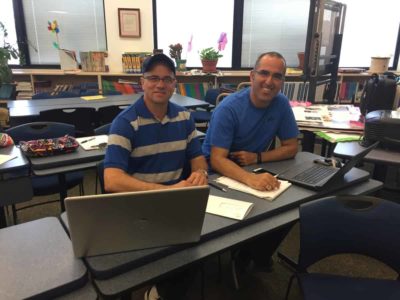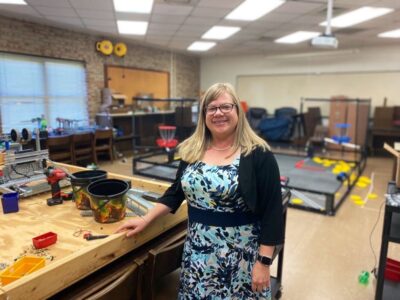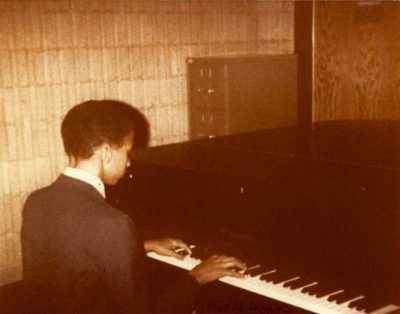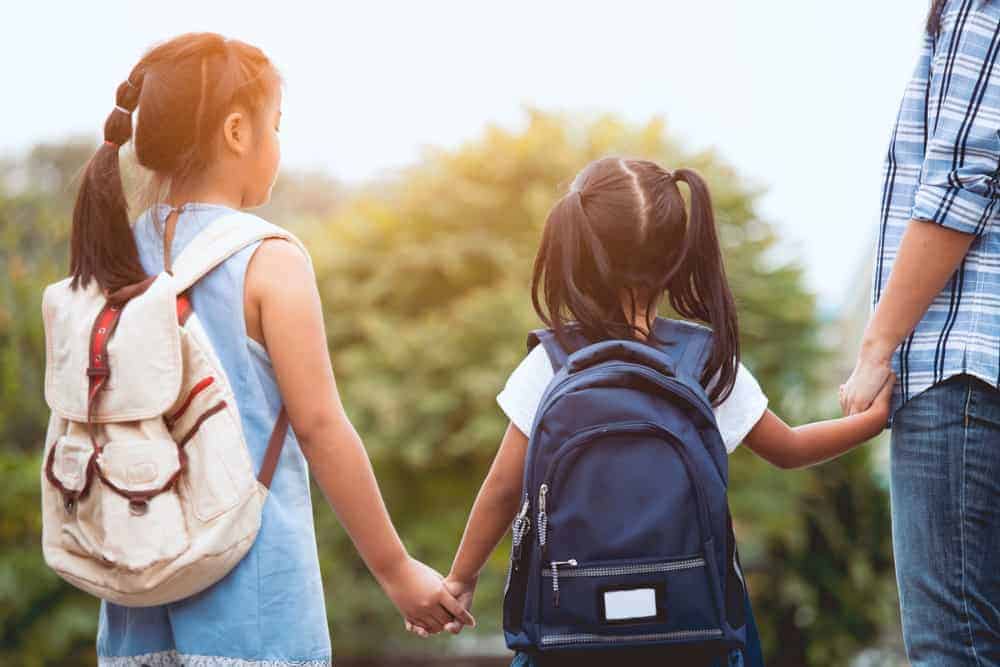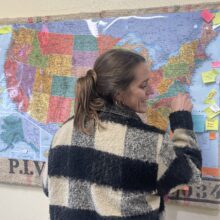September 24 was a big day for Communities in Schools North Carolina (CISNC). The organization hosted a fundraiser that brought in more than $120,000 for its programs, and an employee of Communities in Schools Chatham county was presented the Order of the Long Leaf Pine — the highest award for state service granted by the Office of the Governor.
Award winner Kim Caraganis worked for Chatham County Together! — an organization focused on juvenile justice, prevention, and intervention, which became Communities in Schools Chatham County (CISCC) in 2014. Caraganis says Chatham County Together! always had an element of mentorship, but worked mostly with students outside of school. With the transition to CISCC, that changed.
“I see that we have been working in education from the beginning,” Caraganis said. “It was just called something different.”
What is Communities in Schools?
Communities in Schools (CIS) is a national nonprofit that tries to keep students in school until graduation by using community resources and relationships. With site coordinators in schools to identify challenges, along with collaborative partnerships with community organizations, CIS leverages outside resources inside schools, keeping the most vulnerable students enrolled. The program started in North Carolina in 1989 and is in 36 counties across the state.
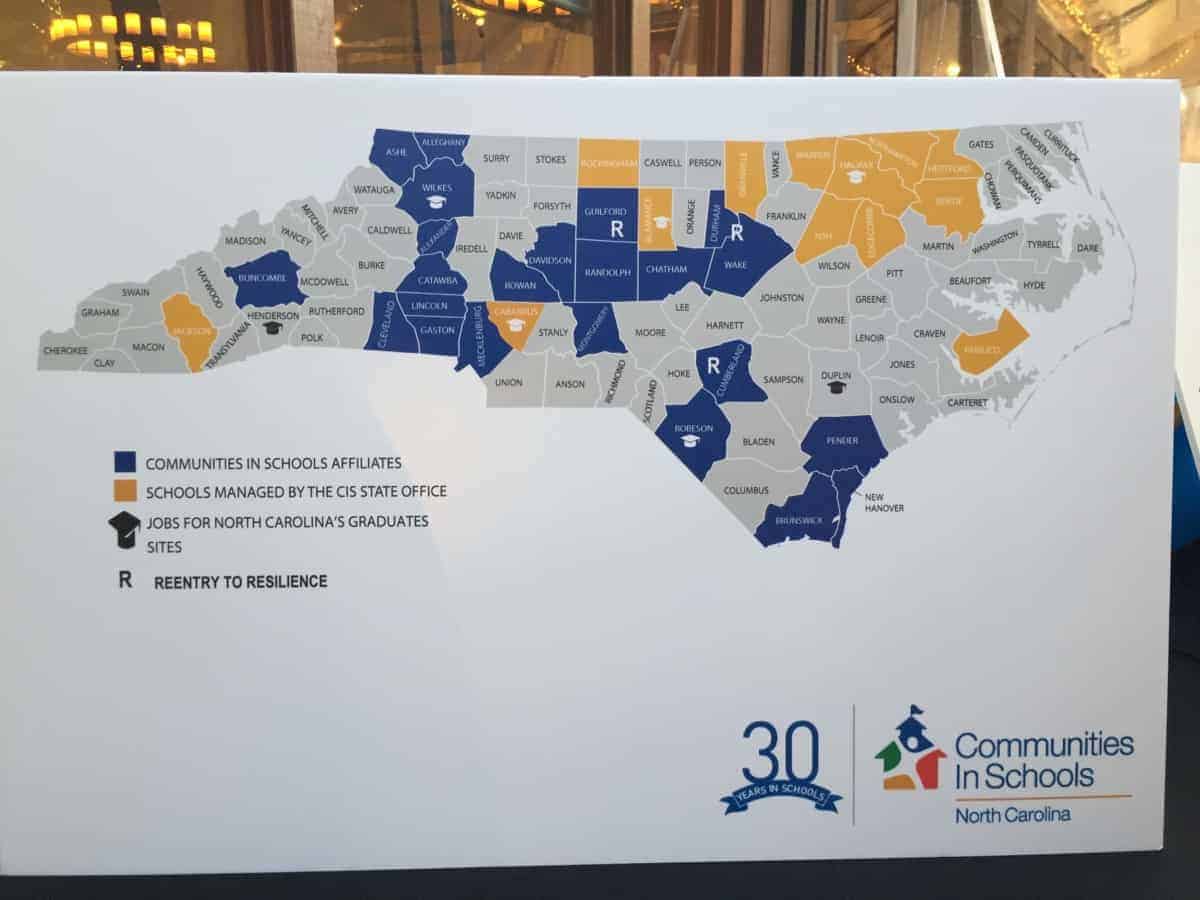
A combination of principles guide its work: attendance, behavior, coursework, and parent/family engagement — in shorthand, the ABC+P model. CISNC provides wraparound student services and emphasizes the importance of showing up, identifying student needs, and working with community resources to support those needs.
As of February, Caraganis will have worked with this organization for 30 years. We spoke with her about the organization and why she thinks it’s working for students and schools. See our conversation below, edited for length and clarity.
Parker: How many schools is Communities in Schools Chatham County working in, and in what ways?
Caraganis: In 2018-19, our services touched 17 schools. We have CIS model programs in three schools — Bonlee School, which is a K-8; Virginia Cross Elementary, which is an elementary school; and Chatham Middle School. We have a different CIS model, which is called general youth services, where we have a staff person embedded at three other schools.
At the general youth services sites — Pittsboro Elementary, Horton Middle School, and Siler City Elementary School — we have a staff person there one day a week. So they are not there all week, but they have a smaller caseload of kids that they are working with at that school.
The other way that we work with schools across the county is that we have been recruiting mentors and lunch buddies for kids that attend other schools. The lunch buddies, obviously, are volunteers coming into school, and the mentors are usually community-based. And then we also offer three juvenile justice programs.
So we are serving kids through those three programs in family advocacy, community service, and restitution and teen court. We serve students that go to schools in Chatham County. So when we did kind of a look at how many schools and kids we are serving in Chatham County, in the 2018-19 school year, it was 17 out of 18.
Parker: What programs does Community in Schools offer that you’ve seen work better than others?
Caraganis: I think the CIS model works. I mean, that’s kind of what our main thing is at this point — we serve more kids through those programs; we’re more connected with the school. I feel like we have more time with the students because we have staff in the schools.
It is also the integration of services that kids are getting. They may be getting services that the school’s providing, but we’re also able to leverage other services and resources for those students because of our foot in the community and our foot in the school. I think that is a way that we can work with the whole child in a really great way.
I think the mentoring and the lunch buddies also are very effective intervention because of the relationship, and all of our programs are relational. I mean, that is really kind of the nuts of all of these programs — it’s building the relationship with the volunteer, building the relationship with the student support specialist, building the relationship with the family advocate, or the program managers for teen court and community service. The programs have different expressions of service, but the main thing is the building of the relationship, and relationships with the families as well.
Parker: How do you see your relationship with the school system?
Caraganis: We have a great relationship with the school system. And we feel like there’s an open line of communication between staff and administrators, and we’re basically working on the same goals. We may be working with individual kids, but essentially, we are aligning our work with the goals of the school improvement plan that’s done every year.
They look to us to sometimes make the connections with families, because that’s what we’re good at. And it’s not that they’re not, but sometimes they don’t have the capacity to go out in the community to, you know, go to someone’s house and knock on the door, because they haven’t been able to reach them in some way.
We depend on them to support our efforts and give us access to data. They give us space in the school. If there’s something we need, we know we can call them. So we are very fortunate in our county to have a wonderful not only central office, but to have administrators at the school level that are very supportive, and the other support staff, like the vice principal or the guidance counselors. I think being in the schools, teachers now understand our role, now that we’ve been there awhile and they see us as a resource.
Parker: If there was one thing you wanted people to know about Communities in Schools, what would that be?
Caraganis: I think we’re essential to kind of the health and well-being of the community, because of all the work that’s done here on behalf of kids. It’s not just one thing, it’s so many things, it’s everything, from connecting families to mental health services to sending kids to camp. You know, we have a connection with a volunteer that’s been getting furniture and vacuum cleaners and refrigerators to help when their [students’ families] are moving into a place.
Having that networking in the community I think is essential to schools.
If there’s a need to be able to find it, to navigate … we’re navigators as well, to help people navigate systems. That’s a huge thing. It’s very confusing at times, if someone needs to access mental health, or is involved in the social services, or the juvenile justice system, and sometimes even, you know, the exceptional children’s services to assist with that.
And to also help provide a voice for families, because sometimes they don’t have that in some of these places or they don’t have the confidence to speak up. And so helping them in that process.
I think we’re essential at this point. I think if we weren’t here, there would be a huge gap.
Recommended reading
